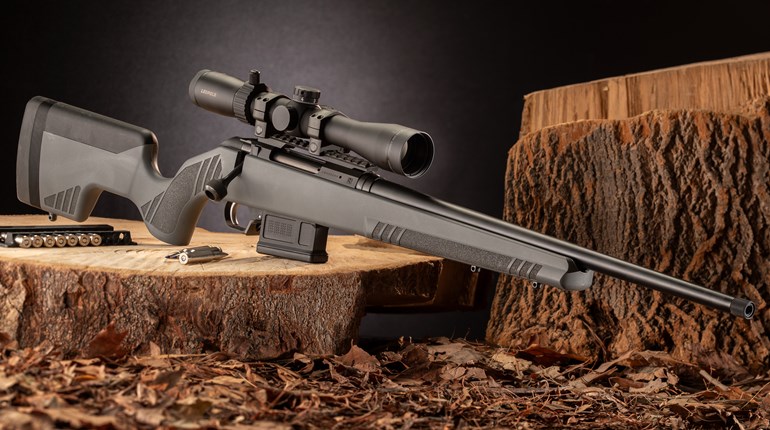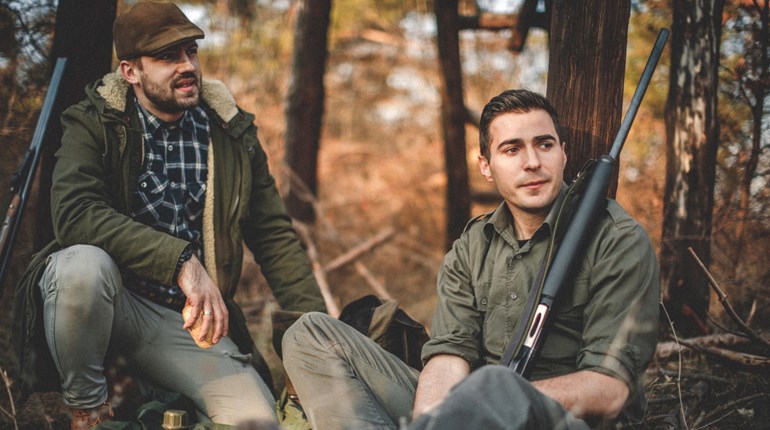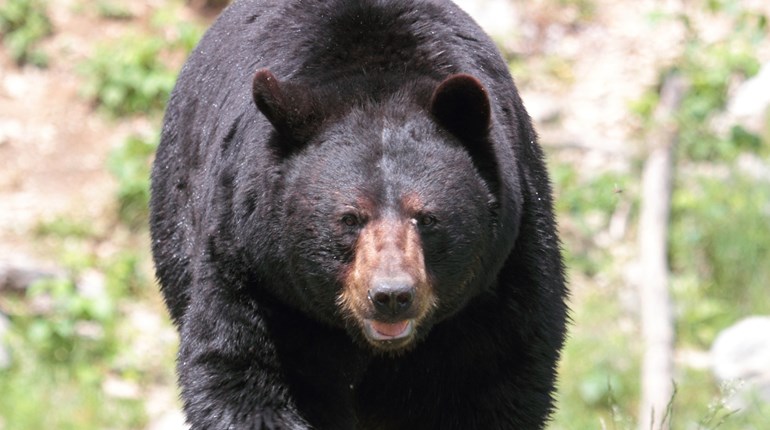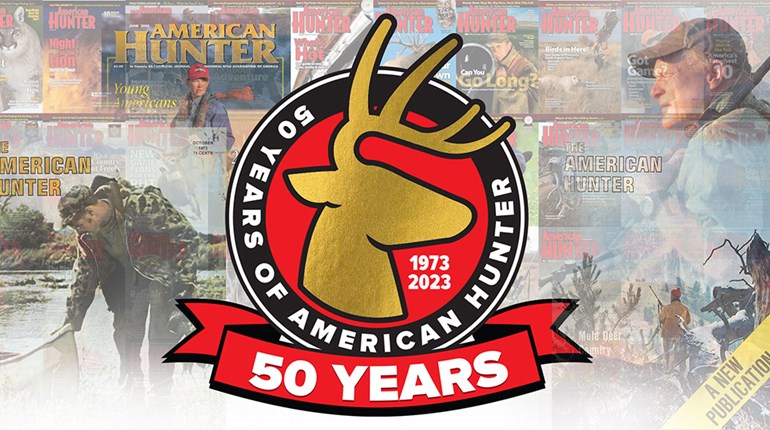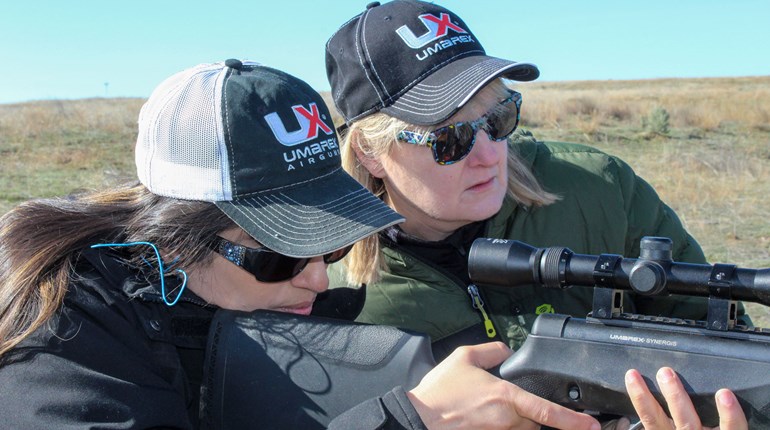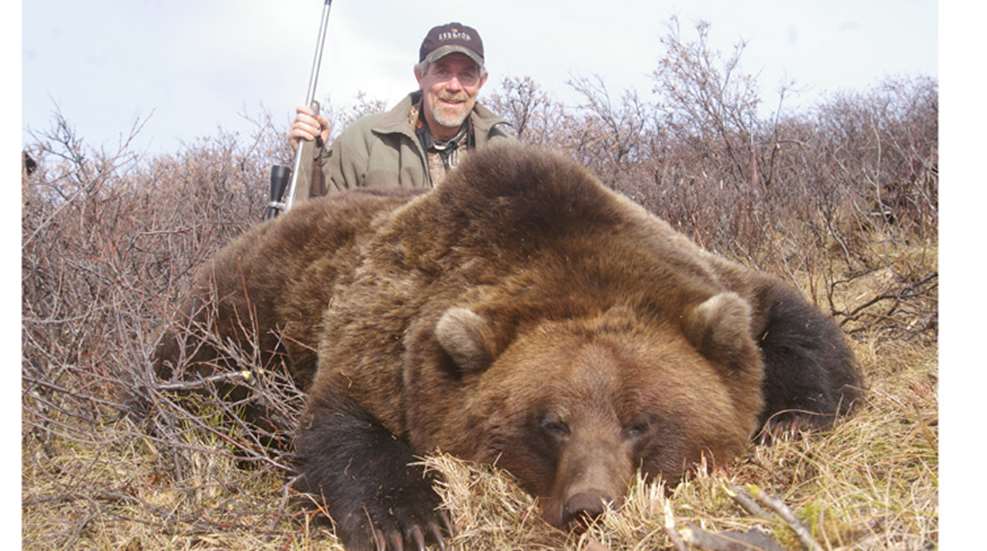
Bear hunting has an edge you won’t find in any other kind of American hunting. In addition to being comparatively difficult, any adult bear can be dangerous and is equipped to absolutely thrash a human. Yes, the U.S. has other potentially dangerous species—mountain lions, feral hogs and alligators—but only in the rarest circumstances do hunters actually risk attack from them. Granted, it doesn’t happen a lot while bear hunting, but the risk exists, particularly when you must track one after shooting.
The element of danger doesn’t mean bear hunting should be avoided, however, and for some experienced hunters, it’s actually a huge incentive. For them, risk translates to a bigger emotional payoff than can be gained from hunting non-dangerous animals.
But risk is far from the only reward. Along with fearsome strength, teeth and claws, bears possess super-acute senses of smell and hearing, along with better eyesight than many folks think. Those tools complement an innate wariness that makes getting close enough for a good shot very challenging. A successful bear hunt is a true accomplishment.
In 34 states where now permitted, bear hunting is a boon to conservation, ensuring populations remain at healthy levels and that conflicts with humans—the ultimate risk to this animal’s well-being—are minimized. More immediate benefits come in the form of meat and trophies. Bear meat may be an acquired taste, and one rule of thumb holds that bruins that feed primarily on carrion are rather unsavory. My dining experiences have mostly been favorable, and fall bears gorging on berries, acorns, row crops and even prickly pear cactus, are very tasty indeed. As with pork, bear flesh must be cooked thoroughly to guard against trichinosis, but when done so without drying out the meat—a la pot roast, for instance—diners are in for a treat.
There are three kinds of bears in the U.S.: 1) Black bear (Ursus americanus), whose numbers and territory are expanding fast and are present—if only as transients—in all but a handful of states. 2) Grizzly or brown bear (Ursus arctos), common throughout parts of Alaska and western Canada; also present, but presently not hunted, in the northern Rockies. However that may change after a recent delisting recommendation for the Yellowstone grizzly population from the U.S. Fish and Wildlife Service. 3) Polar bears (Ursus maritimus) inhabit Alaska’s North Slope proximate to the Beaufort and Chukchi seas. They are not hunted in the U.S. since passage of the Marine Mammal Protection Act of 1972, but can be hunted in northern Canada and a few European countries.
Where and How
For reasons of cost and accessibility, almost all hunters start with black bears. Besides practicality, it’s also wise to gain experience before going after the bigger, more dangerous species. Adult grizzlies and brown bears weigh between 500 and 1,200+ pounds, while male polar bears can top 1,500, and hunts for both are normally quite arduous. By contrast, adult black bears typically range from 140 to 500 pounds, and while some live in remote locations, many can be found not far from where most hunters live.
However that doesn’t mean you can simply stroll out into the woods and spot one. Bears are famous for being reclusive, and as a result, hunters often rely on specialized methods like baiting or pursuing them with trained hounds. In swampy and heavily forested terrain these may be the only feasible tactics, however several states do not allow baiting and/or hounds. Alternately, hunters must key on food sources. In spring seasons (open in the western U.S. and most of Canada), bears newly emerged from winter dens consume grasses to restart their digestive systems. In fall, mast and berries, farm crops, small mammals and fish are favorite meals. Hunters need to locate such feeding sites and then figure out how to keep tabs and approach them without alerting the quarry. Yes, it’s difficult, but dedicated bear hunters manage to put it all together.
Also an option are guided hunts, which tend to be common, enjoyable and, more often than not, successful. Such hunts can be found in many U.S. states, where they are conducted according to locally favored tactics—baiting, hound pursuit, spot-and-stalk, etc. Although hunts for the great northern bruins run well into the five figures, outfitted black bear hunts in the Continental U.S. and eastern Canada can be pretty affordable, often no more, or even less, than what one would pay for a deer hunt in the same locale.
Shots on Bears
At the beginning, we mentioned “getting close enough for a good shot,” and while that’s critically important in every kind of hunting, doing so warrants even greater attention with potentially dangerous, heavily built game like bears. The essence of bear hunting—indeed, one of the reasons it is so exciting—is that getting close enough for a sure-thing shot may mean close enough to put oneself at risk. Two absolutes are involved here. To achieve correct shot placement hunters must understand bear anatomy, which differs from deer and elk. And they must, as goes a wise old saying: “use enough gun.”
The former requirement can be learned from various sources, including instructional sections of state wildlife-agency websites (see links below). A clear shot at the vitals is always a prerequisite, and while that can be uncertain in situations where the bear is on the move, clear-cut opportunities on stationary animals are routine in baiting and hound-hunting scenarios. Not only are those hunters able to wait patiently for the bear to move into an optimum position, invariably those shots are close, usually within 50 yards, and taken from a solid, rested position.
Although bears can be killed reliably with the rifles and loads most of us choose for deer hunting, I’d make the case to go bigger, to hit it with ample knockdown force, to have more than enough power if follow-up shots are needed. Just as important as cartridge energy is bullet performance, and accordingly, I recommend using a stout, controlled-expansion projectile that will penetrate reliably and cause massive tissue destruction. There’s no advantage in compromising.
Specifically, for black bears in most places, I would, at minimum, opt for a .308 Win. or .30-06/180-gr. round loaded with a bonded bullet like the Nosler Accubond, Hornady Interbond, Trophy Bonded Tip or Swift A-Frame, or a copper-alloy slug like the Barnes TSX or Hornady GMX. For the bigger bears in Alaska and Canada (both blacks and interior grizzlies), I’d look to the .338 Federal/210-grain; .338 Win. Mag./225-grain; .375 Ruger/300-grain or .375 H&H/300-grain; again, loaded with high-performance bullets. For giant brown bears and polar bears, nothing smaller than the aforementioned .375s...and many in the know step up to .416s with a 400-grain bullet.
Bear in Mind
Though I wouldn’t urge beginners to start with bears, they are a perfect step up for those who really catch the fever. Bears are plentiful and are becoming ever more widely distributed and accessible—in fact most bear hunting takes place on public land. Guided outings are relatively affordable, and while season dates vary from state to state, springtime hunts can fill a void when other big-game seasons are closed.
There’s a special fixation American hunters have for bears. Going way back, far before European colonization even, bear-hunting tales dominated our campfires. Like us, bears too are alpha predators, incredibly capable at their business, creatures that earn our respect and sometimes elicit our fears. Hunting and killing a bear somehow changes us as hunters in a way that’s not so evident with other kinds of game. Bear hunting is part of our cultural birthright, a high bar for those who accept the challenge.
How-To Sources













